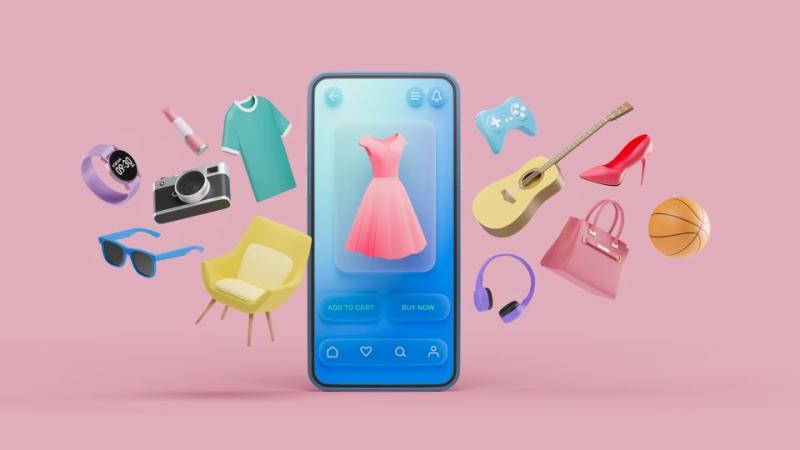Driving Revenue By Reconnecting Mobile and In-person Shopping Experiences
After two years of isolation, consumers are finding new ways of re-discovering the in-person experience of brick-and-mortar shopping. Things may never go back to exactly how they were in the past, but retailers looking to establish innovative ways of connecting with customers, deliver personalized experiences, or efficiently manage personnel and inventory shouldn’t overlook the value of connectivity in merging the in-store and online shopping experience.
The time to invest in tech-enabled retail experiences and realize the promise of omnichannel is now. Yet, more than 35% of consumers still reported zero exposure to in-store technologies like mobile payments, mobile app orders, and apps to scan barcodes, a 2020 McKinsey survey found.
While enabling these and other technologies may already be part of retailers’ strategy, they must go a step further and truly connect the in-app and in-person shopping experience. More than half of retail app users say they use them while shopping in-store. And shoppers who use retail apps in-store found brick-and-mortar purchases 49% less friction-laden than shoppers who didn’t use mobile apps in-store, according to the 2022 Global Shopping Index.
Retail apps are the window to reconnecting with customers in-store and forging stronger connections than ever – supporting customers’ new habits and heightened expectations for personalization, post-pandemic.
Support Contactless Shopping Habits and Customer Autonomy
Contactless shopping, home delivery and in-store pickup trends are driven by habits formed over the course of the pandemic. While initially driven by safety concerns, these contactless shopping behaviors and preferences are here to stay, for convenience and speed. More than 70% of those who began using in-store self-checkout in the past two years, or used it more often, intend to keep using it after the pandemic, McKinsey found.
Supporting contactless shopping behaviors and achieving omnichannel ambitions through mobile devices can help customers maintain their preferred contactless shopping habits. Enabling mobile payments or app-based checkout helps customers choose means of shopping that are most comfortable and convenient to them – and being able to deliver on their needs for convenience helps build stronger loyalty.
The increase in contactless shopping behaviors also indicates a desire for more customer autonomy. Mobile apps can help customers learn more about products on their own. App-based barcode scanning, deals, promotions, and product comparisons can help customers feel more confident about making decisions in-store. These capabilities ensure customers have all the information they need at their fingertips, and supports in-store associates who may be juggling multiple responsibilities – which now include more fulfillment and order preparation duties than ever before.
Enhance Personalization and Seamless Customer Service
As the pandemic disrupted shopping behaviors and created uncertainty for shoppers and retailers alike, apps are an important venue to re-establish personalization and positive in-person shopping experiences. Retailers can leverage apps and insights from them to deliver higher quality personalization and service, giving customers a reason to keep coming back.
Insights from apps can help retailers offer timely recommendations, notifications, suggestions to customers while in-store. Outside of the app interface itself, location services enabled in-app can help make the physical store feel more welcoming and personalized, from greeting customers through real-time app notifications as soon as they arrive on site to customizing digital signage.
Insights from in-store app usage equips sales associates, removes friction from shopping experiences and delivers a more positive customer experience. Having better visibility into customer browsing behaviors helps sales associates more efficiently personalize service and engagement for individual shoppers. Location services in mobile apps also helps store associates gain insight into shopper footfall traffic, helping them understand where and when to prioritize more sales support.
In order to leverage the large amounts of data and keep it secure, retailers can look to machine learning and artificial intelligence. Artificial intelligence-enabled network security protects customer data, while machine learning can help identify patterns and make sense of data.
How Can Retailers Merge In-app and In-store Experiences?
While many retailers have strategies in place to adopt and implement in-store technology, one key to enabling these technologies is having reliable networks to support digital transformation and mobile shopping strategies. An unreliable network can not only hamper the adoption of these practices, but can prove costly. Network overloads and outages during peak shopping days, like Black Friday or during peak holiday shopping season can result in lost revenue and customers.
Disruption and change present challenges for retailers, but it also presents opportunities to leverage technology to help make operations more efficient, lower costs, and create positive experiences for sales associates and customers alike.
—Todd Nicholson, Director of Vertical Marketing, Juniper Networks





